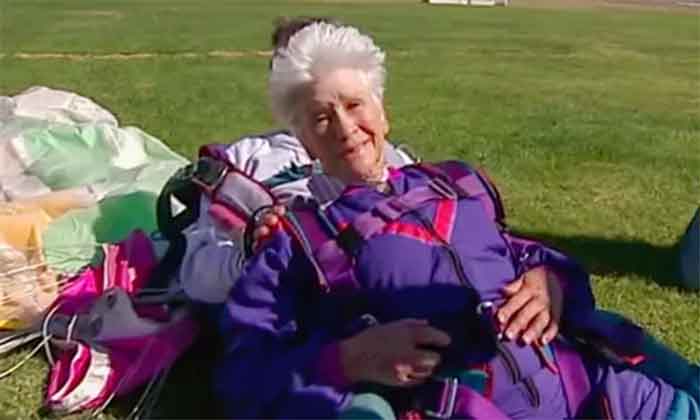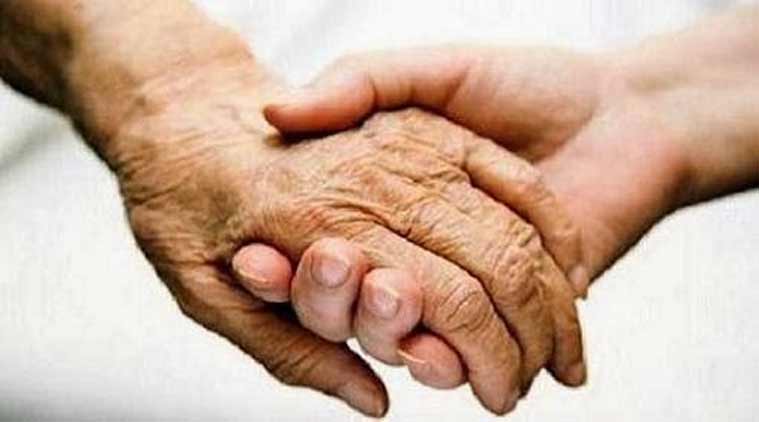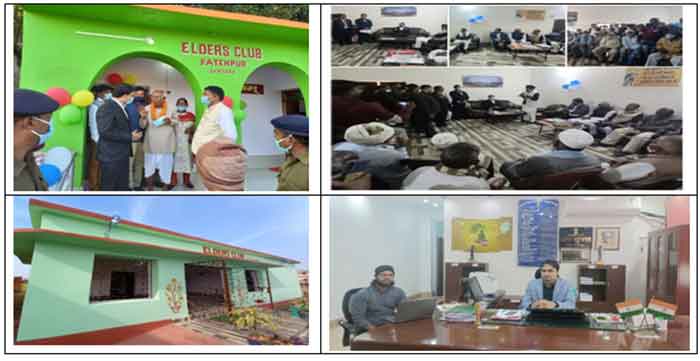
Abstract: Digital technologies can unlock the full potential of older persons by providing access to digital information products and services in accessible formats. The increasing elderly population and widespread adult use of Information and Communication Technologies (ICT) are intertwined, resulting in a growing integration of digital participation into active aging. Digital inclusion offers options for elderly individuals to integrate into information and knowledge societies, supporting active aging. Aging is a biological process, not a handicap or decline in human condition. Digital inclusion can help people with new needs, relationships, and interests have a higher quality of life. Recommendations for e-inclusion projects with senior citizens in geriatric homes contribute to this. Digital inclusion is emerging as a viable way to support active aging in a fair and respectable context.
Key Insights:
The importance of collaboration between businesses and public institutions to deliver innovations that improve quality of life, work opportunities, and mobility for individuals as they age, ultimately boosting economic growth and benefiting society. It highlights the need for comprehensive consideration of various policies to effectively address active aging in the context of demographic change.
– Population ageing and technological innovation are transforming work, promoting flexible career models and age-friendly environments, encouraging longer work hours and fulfilling retirement goals.
-To create an inclusive digital economy, it’s crucial to encourage regular reskilling and the use of new learning platforms that democratize knowledge and skills access.
-Robust privacy, IP regimes, and security standards can enhance trust in data sharing tools and services, thereby enhancing responses to population ageing.
-Companies and governments are forming cross-sector partnerships and exploring payment and reimbursement structures to incentivize innovators in bringing scalable digital health solutions to the market.
-The readiness and progress towards a silver economy require improved research methodologies and coordination between studies.
Introduction: The world is increasingly utilizing digital media across all sectors, with its primary focus on adolescents and young people. However, the aging population is also gaining attention, impacting economic and health spheres. In recent decades, an optimistic perspective on old age, based on generativity, has emerged, promoting active aging, satisfactory aging, competent aging, and productive aging, despite the negative view of biological, psychological, and social decline associated with old age (Triadó Tur 2018). Information and Communication Technologies (ICT) help older adults stay socially active by communicating, entertaining, and engaging in banking, work activities, and news. Avoid adding ‘among others’ after ‘and’ as it indicates the sentence has ended.
Digital inclusion processes are necessary to enhance the possibilities and activities of the aging population, despite specific age conditions. This systematic process respects diversity and promotes equity, contributing to active aging. Recommendations are made to advance digital inclusion initiatives in nursing homes, ensuring that the population’s possibilities and activities are enhanced, regardless of their age situation.
Aging and Digitalization: The 21st century is known for its growing digitalization. ‘Offliners’ run the risk of being left out at a time that welcomes rapidly evolving innovation in digital technology as more and more commonplace services go online. This mostly affects elderly people who are less linked to the internet than younger people who were born into the digital era. These disparities were highlighted further by the COVID-19 pandemic’s accelerated digitalization as many older people found it difficult to access basic goods and services, such as pensions, food, and medication during lockdowns, if they couldn’t access them online. As a result, the significance of digital inclusion has come to the forefront of policy discussions due to our reliance on digital tools during the epidemic.
As societies advance in their digitalization, developing digital skills is consequently a top policy goal. This is especially true for older people. This can enable older people to take use of the opportunities offered by digital technology and the Internet in an efficient, safe, and secure manner. With the release of its Action Plan to Implement the European Pillar of Social Rights earlier this year, the European Commission set the bold objective that at least 80% of the population between the ages of 16 and 74 should possess at least basic digital skills, which are seen as a requirement for inclusion and participation in the labor market and society in a digitally transformed Europe.
Mass aging and digitalization are growing phenomena, with the elderly group needing integration due to the universalization of access to ICT. These phenomena will be addressed separately, with intersecting aspects considered as they emerge from information and knowledge societies.
Aging: The United Nations predicts that by 2050, 25% of the global population, except for the African continent, will be in the age group of progressive aging.
Aging is widely accepted as a biological process involving physiological changes, including physical and psychological capacity reduction and autonomy loss. Neugarten’s statement suggests that life is reorganized based on the time left to live, rather than the time elapsed since birth, highlighting the importance of understanding aging as a biological process.
Each culture seeks its own interpretation of aging, often based on social imagination, leading to erroneous interpretations and fear of aging (Alvarado García and Salazar Maya, 2014, p. 57), as contemplated by the World Health Organization (WHO, 2015).
The assumption that today’s older people are in better health than their parents or grandparents is counter to negative misconceptions about aging. The phrase ‘70s are the new 60s’ may seem positive, but it is ultimately not accurate. If 70-year-olds are as healthy as 60-year-olds in the past, there would be less need for political measures.
Negative societal perceptions and current societal characteristics often lead to older adults experiencing loneliness and social isolation, increasing their risk of depression, physical and cognitive impairment, early morbidity, and mortality (Barbosa Neves, Franz, Munteani and Baecker 2018). The aging population, despite being a biological process, does not imply incapacity or loss of human condition. Instead, it introduces new demands, relationships, and interests, impacting states’ social, economic, and political conditions (Urrutia Serrano 2018).
The active aging paradigm proposes a new perspective to confront the new reality, focusing on health, participation, security, and learning throughout life. This approach addresses interrelated scenarios and requires analyzing each action from each pillar when implementing corresponding actions, ensuring a comprehensive approach to aging. Active aging refers to the satisfaction, competence, productivity, and success of older adults, characterized by a healthy lifestyle, reduced dependency, and improved health, achieved through active participation in civic, political, social, and family life.
The population group is not homogeneous, with daily diversity in characteristics, behaviors, and expectations. Differences are evident in academic matters, work, socioeconomic aspects, family issues, and health. Elderly people with high education levels are more prevalent, while those with low or no education levels are less common. Work includes various jobs, executives, and specialized personnel. Aging affects everyone equally, and family issues range from those who are part of a family to those who have lost it.
Active aging is beneficial if used as an equity alternative, allowing those without it a better quality of life and promoting active social participation. However, this requires collective commitment from all sectors of society, including those who build public policies and execute them, to ensure its success.
Digital Inclusion – The digital divide, influenced by factors like gender, age, social class, and economic status, is a significant issue in accessing information, knowledge, and education through ICT. This divide can be divided into three generations: those who have access, those who don’t use it, and those who use it quality and type (Cabero Almenara and Ruiz Palmero 2018).
The digital divide, particularly among the elderly population, is a global issue, with varying percentages of the elderly using computers compared to those with home computers, suggesting a segment of the elderly population has access to computers but doesn’t use them (Sunkel and Ullmann 2019). The variation in educational levels, economic and social development, and broadband and internet connection availability across countries is a significant factor contributing to this disparity.
Digital inclusion initiatives aim to address the gap in active participation and ICT use in everyday life by systematically eliminating obstacles and promoting personal and collective transformation, aiming to improve the quality of life for individuals. Vega’s (2010) process consists of three stages: 1) access to ICT, which reduces costs and increases technological coverage; 2) use of ICT, which can be overcome through educational processes; and 3) appropriation of ICT, which leads to individual and collective transformation through educational processes that are associated with people’s environments.
Initiatives prioritize universal access to ICT, with older people being encouraged to use it punctually through digital literacy and telemedicine applications. However, a low proportion of older people are appropriating ICTs for greater autonomy, movement, information access, teleworking, and electronic commerce, paving the way for better access to ICT.
Older adults and Digital Inclusion: Despite challenges, older adults are gradually integrating into a digitalized society, according to the World Health Organization. They focus on smaller goals, optimize their current capabilities through practice and new technologies, and compensate for skill loss (WHO, 2015 , p.27). Despite a lack of connection between older adults and technology, individuals aged 65-74 have a more advanced approach to computer technology and internet access, thereby maximizing the potential benefits of technology (Lee et al., 2018).
A survey of 44 older adults aged 50-85 found that ICT in their daily work provides independence, autonomy, family communication, memory improvement, and access to important information, thereby reducing loneliness and social isolation (Paz Revedol, García Gavidia, Fernández and Maestre 2016).
Moreno Cuervo and Parra Coutin (2016) emphasize that the technology empowers older adults to combat loneliness and isolation, enhances personal and social autonomy, and fosters intergenerational relationships by allowing them to share common interests with younger family members. New tools provide numerous opportunities for individuals in society, including acquiring knowledge and self-esteem, as well as meeting specific needs like supporting children or grandchildren, securing new jobs, or maintaining current ones. The inclusion of older adults in information and knowledge societies offers advantages, but universalization of ICT cannot be achieved through a single strategy; it must be tailored to specific interests and conditions (Vega, 2014, p.135).
Thus, in the case of older adults, relevant aspects must be considered, such as: 1) aging is characterized, according to Martín-Martín (2017), by a decrease in sustained attention, working memory and information processing, that can affect the feeling of control and the lack of confidence in their abilities, which forces them to make a great effort to acquire new knowledge; 2) “the process for teaching adults is based on previous experience and interest in the object of study” (Piña and Rodríguez, 2016, p.12); 3) manifestations of technophobia are common among older adults, but the feeling of anxiety that it usually produces can disappear with the increase in technological interaction, point out Sunkel and Ullmann (2019); 4) it is necessary, as recommended by Contreras et al., (2018), to ensure that the physical and mental capacities allow for active participation, to adapt the vocabulary for greater understanding, and to adjust the times of the activities according to the interest and emphasis. that the members wish to give to each topic.
From these considerations, and based on the stages of digital inclusion proposed by Vega (2010), some proposals are recommended, when it is intended to carry out a digital inclusion process in nursing homes:
1) To improve access to ICT, identify home conditions and human composition using techniques like observation, interviews, and surveys. Consider adaptation through joint work between managers, academia, and the productive sector, readjusting and reusing obsolete equipment.
2) During adulthood, developing computer skills is crucial due to work, legal, and personal needs. Utilizing a predilection for reading and information can make using digital formats and mobile technologies easier. Personalized education, incorporating principles of andragogy, usability, and accessibility, can reduce failure risks.
3) The application of ICT should consider specific interests to help older adults transform their reality into productive, intellectual, and communicative aspects, becoming a super-user and effectively using the Internet (Tyler, Simic and George-Walker 2018).
4) The appropriation of ICT for older adults can be seen in various forms, including mobile health technologies (m-health), electronic commerce, public administration, citizen participation, and digital assistants based on artificial intelligence. These technologies encourage proactivity in patients, reduce financial burdens on healthcare systems, and provide convenience for purchasing goods and services. Additionally, they facilitate electronic voting and citizen oversight, and enable tasks like reading news, checking weather forecasts, and shopping online.
Conclusion: The aging population and digitalization intersect, particularly in older adults, highlighting the importance of active aging and Erikson’s generativity in the present. The relationship between older adults and ICT is a crucial area for interdisciplinary processes, addressing limiting factors and ensuring access to ICT as a human right, thereby preventing isolation and promoting inclusivity.
The state is enhancing inclusion and quality of life by improving communication, information exchange, and daily tasks like shopping and public administration (Barrantes Cáceres and Cozzubo Chaparro 2019). Active aging promotes equity by allowing older adults to live fully with their potential and interests. Digital inclusion promotes functional incorporation into the current world, ensuring generative activity in old age not only improves contexts but also gives meaning to lives (Villar, López and Celdrán, 2013, p. 898).
Digital inclusion should be a systematic process that goes beyond access to ICT and digital literacy programs, transforming older adults by facilitating diverse alternatives based on their needs, interests, and conditions, and promoting better living, acting, and being.
Contribution of the Author: The Author had full access to all of the information in this research study, which has been studied and approved the final manuscript. The author is sole responsible for the conceptualization, design of the study, review of related literature and discussion.
Bibliographic References:
Alvarado García, A. M., and Salazar Maya, Á. M. (2014). Analysis of the concept of aging. Gerokomos, 25(2), 57-62. http://dx.doi.org/10.4321/S1134-928X2014000200002.
Barbosa Neves, B., Franz, R. L., Munteanu, C., and Baecker, R. (2018). Adoption and feasibility of a communication app to enhance social connectedness among friar institutionalized oldest old An embedded case study. Information, Communication & Society, 21(11), 1681-1699. https://doi.org/10.1080/1369118X.2017.1348534.
Barrantes Cáceres, R., and Cozzubo Chaparro, A. (2019). Age for learning, age for teaching: the role of inter-generational, intra-household learning in Internet use by older adults in Latin America. Information, Communication & Society, 22(2), 250-266. https://doi.org/10.1080/1369118X.2017.1371785.
Cabero-Almenara, J., and Ruiz-Palmero, J. (2018). Information and Communication Technologies for inclusion: reformulating the digital divide. International Journal of Educational Research and Innovation, IJERI, (9), 16-30.
Chattaraman, V., Kwon, W.-S., Gilbert, J. E., and Ross, K. (2019). Should AI-Based, conversational digital assistants employ social- or task-oriented interaction style? A task-competency and reciprocity perspective for older adults. Computers in Human Behavior, 90, 315-330. https://doi.org/10.1016/j.chb.2018.08.048
Elueze, I. and Quan-Haase, A. (2018). Privacy attitudes and concerns in the digital lives of older adults: Westin’s privacy attitude typology revisited. American Behavioral Scientist, 62(10), 1372-1391. https://doi.org/10.1177%2F0002764218787026
Fox, G. and Connolly, R. (2018). Mobile health technology adoption across generations: Narrowing the digital divide. Information Systems Journal, 28(6), 995-1019. https://doi.org/10.1111/isj.12179
García Atencia, F. A. (2018). Cognitive biases limiting the development of ICT skills in teachers. Logos Science & Technology Magazine, 10(3), 114-120.
Hou, J., Wu, Y., and Harrell, E. (2017). Reading on paper and screen among senior adults: Cognitive map and technophobia. Frontiers in Psychology, 8. Art. 2225, 1-10. https://doi.org/10.3389/fpsyg.2017.02225
Jasso Reyes, J., Almanza Rodríguez, C. R., and Rivero Carrasco, J. (2013). Physical Culture, its impact on the Elderly. Motricity and Person Magazine, (13), 85-94.
Llorente-Barroso, C., Pretel-Jiménez, M., Abad-Alcalá, L., Sánchez-Valle, M., and Viñarás-Abad, M. (2018). Electronic administration and electronic commerce as instruments for active aging. Open Classroom, 47(1), 87-96. https://doi.org/10.17811/rifie.47.1.2018.87-96
Martín-Martín, F. (2017). Communication skills as conditions in the use of ICT in older adults. International Journal of Educational Research and Innovation, IJERI, (8), 220-232.
Mishara, B. L., & Riedel, R. G. (2000). The aging process. Madrid: Morata Editions.
Moreno Cuervo, A. and Parra Coutin, M. A. (2016). ICT learning by older adults (Monograph). Pontifical Bolivarian University, Colombia.
Paz Reverol, C. L., García Gavidia, N., Fernández, J. and Maestre, G. E. (2016). The use of ICT in older adults in Maracaibo (Venezuela). Option, 32(12), 169-188.
Sunkel, G., and Ullmann, H. (2019). Older people in Latin America in the digital age: overcoming the digital divide. ECLAC Review, (127), 243-268.
Tyler, M., Simic, V., and De George-Walker, L. (2018). Older adult Internet super-users: advice from experience. Activities, Adaptation & Aging, 42(4), 328-339. https://doi.org/10.1080/01924788.2018.1428472
United Nations. (2017). World Population Prospects: The 2017 Revision – Key Findings and Advance Tables (Working Paper No. ESA/P/WP/248). New York, USA: United Nations, Department of Economic and Social Affairs, Population Division.
Vega, O. A. (2010). Digital Inclusion: Beyond access and use of ICT. Work presented at SISOFT 2010. In L. Joyanes (Ed.), SISOFT 2010 Proceedings Book, (pp. 401-405). Madrid, Spain: @LibroTex.
Vega, O. A. (2014). Digital inclusion of rural Colombian communities. (Doctoral thesis). Pontifical University of Salamanca. Spain. https://doi.org/10.13140/rg.2.1.1865.3842
Villar, F., López, O. and Celdrán, M. (2013). Generativity in old age and its relationship with well-being: Who contributes the most and benefits the most? Annals of Psychology, 29(3), 897-906. http://dx.doi.org/10.6018/analesps.29.3.145171>
World Health Organization, WHO. (2015). World report on Aging and Health. Geneva, Switzerland: WHO.
Gautam Makwana ,Research Scholar Ph.D (Social Work), School of Social Sciences, Department of Social Work, Mizoram University (A Central University) Aizawl, Mizoram, India
E mail: [email protected]














































